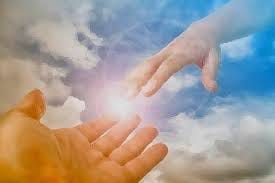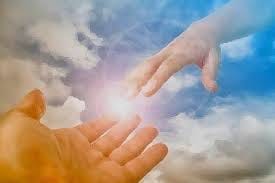The First Decade of the Restoration
More Background Information for Studying Doctrine and Covenants 20
I am not the first to notice, or to mention, that the first decade of the Restoration is particularly significant. In his recent general conference talk “Days Never to Be Forgotten,” Elder Gary E. Stevenson taught:
My dear brothers and sisters, the history of The Church of Jesus Christ of Latter-day Saints in this dispensation is resplendent with divine experiences that demonstrate how the Lord has guided His Church. There is one decade in our history, however, that stands strikingly supreme above any other—the decade from 1820 to 1830. Beginning with the Prophet Joseph Smith’s experience in the Sacred Grove in the spring of 1820, when he saw God the Father and His Son, Jesus Christ, and continuing until April 6, 1830, that decade is unlike any other.
Consider these remarkable events! The young prophet conversed with the angel Moroni, translated the gold plates, and published the Book of Mormon! He was the instrument through whom the Aaronic and Melchizedek Priesthoods were restored, and then he organized the Church! Oliver Cowdery described that era well: “These were days never to be forgotten.” Miraculous events have continued to this very day.
May I be so bold as to suggest that this year we have commenced a decade that may prove to be as momentous as any that has followed that unparalleled founding decade almost two centuries ago.
There is so much more to explore in the founding decade of the Restoration from 1820 to 1830. It is significant that during this decade, the Lord poured out revelations upon the Prophet Joseph Smith and other early saints before restoring His Church.
Why didn’t the Lord first restore His Church and then pour out revelations? Why did the First Vision, the instructions from Moroni and other angelic visitors, the translation of the Book of Mormon, the restoration of the Aaronic and Melchizedek Priesthood, and many other miracles and revelations precede the formal organization of the Church?
One answer that immediately occurs to me is that the Restoration in this the final dispensation of the Gospel follows the same pattern of Jesus Christ’s life and the founding of His original Church in the Old World in the meridian of time. Another answer that immediately occurs to me is that the foundation of the Lord’s Church is built upon the Rock, upon Jesus Christ Himself and His revelations. Thus it makes sense to lay a solid foundation before erecting the superstructure of the Church upon it.
Some may wonder why the superstructure of the Church is at all necessary if so many revelations and miracles preceded it. The same question might be asked about the New Testament. After all, Jesus Christ went about doing good throughout His life before calling apostles, organizing His Church, and fulfilling His mission and Atoning Sacrifice after His mortal ministry.
If Joseph Smith saw God the Father and Jesus Christ, conversed with angels, translated the Book of Mormon by the gift and power of God, received the Priesthood from John the Baptist and Peter, James, and John, and experienced many other miracles and revelations before the Church of Jesus Christ was formally organized, then what is the purpose of the Church? If Joseph Smith experienced all of these things independently of any church or denomination, doesn’t this mean that a personal connection with Deity trumps any associations between mortals in a church?
Entire books could be written, and entire books have been written on this topic. My brief response, however, is that our ongoing study of the Doctrine and Covenants will help us to better answer such questions.
In the meantime, everything that we have studied in the Doctrine and Covenants and about the Restoration thus far has prepared us for this moment in which the Lord revealed the organization and government of His Church. Portions of the revelation that is now contained in Doctrine and Covenants 20 may have been given as early as the summer of 1829, and the complete revelation, which was known at the time as the Articles and Covenants, was likely recorded soon after the day that the Church was organized, on April 6, 1830. Of this revelation the Prophet Joseph Smith wrote:
We obtained of Him [Jesus Christ] the following, by the spirit of prophecy and revelation; which not only gave us much information, but also pointed out to us the precise day upon which, according to His will and commandment, we should proceed to organize His Church once more here upon the earth.
In earlier revelations, the Lord had promised to establish His Church again:
And for this cause have I said: If this generation harden not their hearts, I will establish my church among them. (Doctrine and Covenants 10:53)
Wherefore, if you shall build up my church, upon the foundation of my gospel and my rock, the gates of hell shall not prevail against you. (Doctrine and Covenants 18:5)
In D&C 20, therefore, the Lord instructs Joseph Smith and the early saints - those who did not harden their hearts - how to begin to build up His Church upon the foundation of His Gospel and His Rock.
Bruce R. McConkie’s section summary divides this section into six sections, which we can study one at a time:
1–16, The Book of Mormon proves the divinity of the latter-day work; 17–28, The doctrines of creation, fall, atonement, and baptism are affirmed; 29–37, Laws governing repentance, justification, sanctification, and baptism are set forth; 38–67, Duties of elders, priests, teachers, and deacons are summarized; 68–74, Duties of members, blessing of children, and the mode of baptism are revealed; 75–84, Sacramental prayers and regulations governing Church membership are given.
It is not coincidental that the rise of the Church of Christ in these last days is directly connected to the calling and ordaining of the Prophet Joseph Smith and the translation and dissemination of the Book of Mormon. We will begin by studying the first portion of D&C 20 in the following post.






Great perspective, excellent suggestions. Keep up the intelligent and faith-promoting commentary. Love, Dad
Thanks dad. ❤️